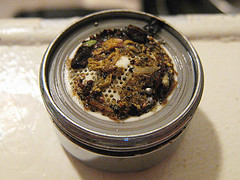Bottled Water and Bacteria News: Consider the Source!

A big news flash today! Canadian researchers have discovered that many popular brands of bottled water contain “surprisingly high” levels of heterotrophic bacteria! The researchers presented their study results at the general meeting of the American Society of Microbiology in San Diego on May 26.
According to their research, more than 70 percent of the popular brands of bottled water tested failed to meet standards set forth by the United States Pharmacopeia, the non-governmental agency responsible for setting safety standards for medications and health care products. (Am I the only person wondering, “Who dat?“)
Bottled bacteria, that’s not funny! But this is! The source where I read about this shocking news was:

So all you bottled water drinkers, start documenting your crippling nausea and fatigue which has rendered you depressed, disabled and unable to work. You’re gonna be rich! Simply respond to the 800-number which will be appearing on late-night infomercials in short order.

